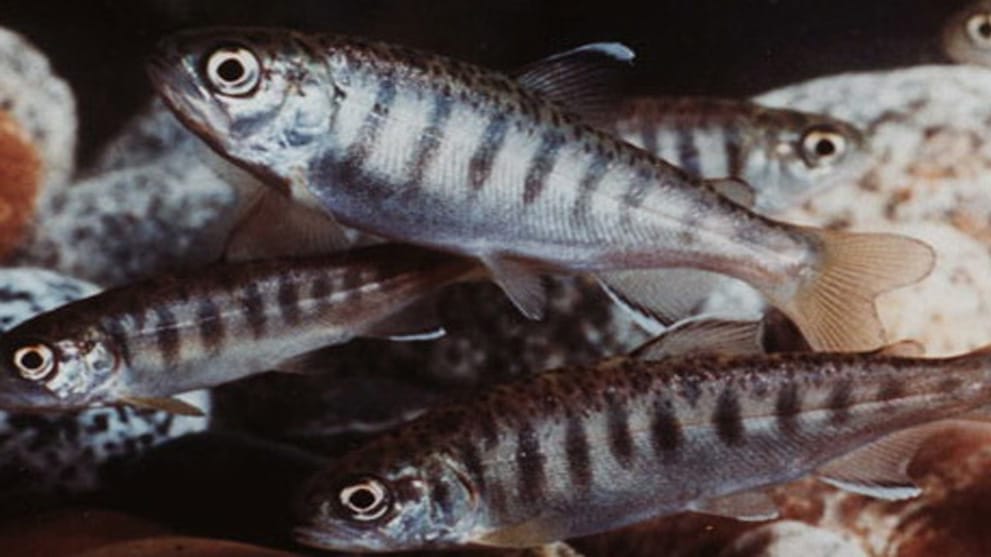Salmon are a vital part of Pacific Northwest ecosystems.
The Greenway Education Program invites youth and their families to learn about Pacific Northwest salmon by watching these videos and completing the paired activities, which are designed for 5th-8th grade students. Each video covers one of the life cycles of salmon as well as a topic related to salmon and their environment. Topics include elements of a healthy salmon stream, identifying native and invasive plants, how to measure water quality, and how you can be a steward for salmon in your day-to-day life.
***New! Scroll to the bottom for a virtual field trip***
How to use these videos: First, download the Forests and Fins Packet. Then, watch a video, do the activity, and repeat! We look forward to seeing what you create! As you complete the activities, send us an email at education@mtsgreenway.org, and we might share them on social media.
1) Introduction
There are six species of Pacific Northwest salmon, including the very special kokanee salmon that is native to Lake Sammamish in King County. To remember the names of the salmon, trace your hand and write their names next to each of your fingers. Write “kokanee” or “little red fish” on your palm to remember that this salmon spends its whole life in a freshwater system.
2) Egg
The stronger and healthier salmon are when they leave their freshwater stream, the better chance they have of returning as spawners. In this video, we discuss key elements of a healthy salmon stream and invites you to create a model of a salmon stream using paper.
3) Alevin
An important part of a health salmon stream is the plants growing alongside the stream (in the riparian zone). Use our plant identification sheets to ID native and non-native invasive plants growing in your neighborhood, and then make a fact sheet!
Native Plant ID Sheet
Non-Native Invasive Plant ID Sheet
4) Fry
At this stage, salmon start venturing out of their redd (their nest) to explore their habitat and hunt for bugs. These bugs, called aquatic macroinvertebrates, are an indicator species. This means the kind and amount of macroinvertebrates found in a stream tell us something about the quality of the water. In this video, we invite you to create your own macroinvertebrate using household items.
5) Smolt
Salmon can travel hundreds of miles to get to the ocean. Throughout this journey, they rely on cold, clean, clear water — which we can measure! Learn how the Greenway Education Program measures the temperature, dissolved oxygen, pH, phosphate, and turbidity. A common threat to cold, clean, clear water is pollution. Use Google Maps to find a stream near your home and follow it to the Puget Sound, looking for potential sources of source and non-point source pollution along the way.
6) Adult
Salmon spend a few years in the ocean and face many threats. In this video, we discuss habitat loss, irresponsible development, dams, culverts, and overfishing. And we show you how to play a game that models overfishing using popcorn or a similar snack food.
7) Spawner
Using their amazing sense of smell, salmon swim back to the stream where they were born, pouring all their energy into producing and fertilizing eggs. They bring nutrients from the ocean back to the freshwater ecosystem. (Researchers have found that trees near salmon streams get 25 to 70 percent of their nutrients from salmon!) Salmon are connected with many, many different organisms from bears to trees to birds to fungi. We invite you to draw an ecosystem web showing all the connections you can think of in a Pacific Northwest forest.
8) Conclusion
At the Greenway Trust, we think it’s really important to take care of our Pacific Northwest salmon. We do that by helping people be stewards of this landscape. Stewards are caretakers. Now that you know what makes a healthy salmon stream, we invite you to draw the healthiest salmon stream you can imagine.
Here are some of our ideas for being stewards of nature.
9) Virtual Field Trip!
Join a Greenway Educator for a Forests and Fins field study trip along the Tolt River in Carnation, WA. You’ll see how we figure out if the river is healthy habitat for salmon by studying four aspects of stream health: (1) the riparian zone, or the area along the stream where the plants grow, (2) the stream channel, (3) macroinvertebrates, or stream bugs, (4) and the water chemistry. After you watch the investigation, we invite you to use the data to determine whether or not the Tolt River provides healthy habitat for salmon. Print this Virtual Field Trip Worksheet ahead of time so you can follow along with Val and make your own conclusion! We also made a list of key vocabulary terms for your reference.
If you would like a copy of the Forests and Fins science journal, email our Education Program Manager at education@mtsgreenway.org.
Forests and Fins is funded by
Lake Washington/Cedar/Sammamish Watershed
King County Flood Control District
King County Wastewater Treatment Division
King County Councilmember Reagan Dunn
King County Councilmember Dave Upthegrove


